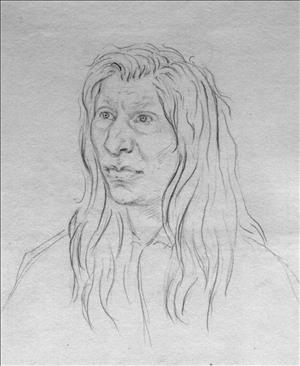On September 11, 1856, Governor Isaac Stevens (1819-1862) convenes the Second Walla Walla Council with Native American tribes to end hostilities and to extinguish their title to their lands. The tribes do not agree and Stevens and his military escort fight their way to safety.
By the spring of 1856, U.S. Army troops and territorial volunteers scattered hostile tribes east of the Cascades, but feuding officials pursued two Indian policies. Territorial Governor Isaac Stevens (1819-1862) wanted to push Native Americans onto reservations and make them farmers to free up their lands for white settlement. U.S. Army Pacific Department Commander Major General John E. Wool (1784-1869) believed that the war was the result of incompetent and greedy civilians and he wanted to separate whites from Indians. On August 2 1856, Wool issued an order stopping white settlement of Indian lands.
After Washington territorial volunteers destroyed a Cayuse village in the Grande Ronde Valley and killed approximately 50 people, mostly women and children, in July, Governor Stevens -- who also served as Superintendent of Indian Affairs -- called a council of all the tribes, hostile and friendly, in the Columbia Basin.
He believed that the Grande Ronde demonstrated Territorial military prowess and would convince the Spokanes, Coeur d'Alenes, and Colvilles into signing treaties. Of the tribes at war he demanded "unconditional submission and surrender of the murderers" to "justice and mercy as decided by the authorities" (Richards, 302). Stevens called the tribes to assemble at the traditional council ground on the Walla Walla River (east of the future city of Walla Walla), where he had met with them the year before.
The Nez Perce, Cayuse, Des Chutes, Yakama, and Umatilla appeared, but the Spokane and Coeur d'Alenes sent word that they would not. Stevens badly miscalculated the impact of the volunteers' victory in the Grande Ronde. Instead of cowing the tribes, most expressed rage and were convinced they should fight. Even factions among the Nez Perce, until then peaceful and even allied with the whites against some other tribes, began to doubt the wisdom of cooperation. Not immediately present, but in the area, were several hundred hostile warriors from several tribes led by the Yakamas Kamiakin, Owhi, and Qualchan.
En route to the council grounds, tribesmen stole Stevens's entire pack train, a significant loss of prestige compelling his party to rely on Major Brevet Lieutenant Colonel Edward Steptoe's (1816-1865) detachment of the 9th U.S. Infantry for food. Steptoe was in the process of building Fort Walla Walla and he fed the Territorial officials despite standing orders not to help them in any way.
By the time the council opened on September 11, Stevens understood the depth of Indian anger over the Grande Ronde killings. He was worried enough to plead with Steptoe to come to his aid. Steptoe demurred. After three days of no progress in the council, Stevens moved his camp next to Steptoe's some six miles away. One hundred Yakamas under Kamiakin, Owhi, and Qualchan appeared and camped right across Mill Creek from Stevens. Stevens met privately with several Yakama chiefs including Owhi and Quil-ten-e-nock who wanted peace, but he refused to recognize any representative of the Yakamas except Kamiakin who remained for war.
Stevens realized that the talks were going nowhere. The next day, September 19, he left for The Dalles escorted by 69 volunteers, 50 packers, and 50 Nez Perce under Chief Lawyer (1796-1876). Three miles from Steptoe's camp members of the Nez Perce, Yakama, Palouse, Walla Walla, and Umatilla tribes under Qualchan and Quil-ten-e-nock attacked the column. Although the total number of Indians numbered 450, those actually engaged was much smaller, generally younger men. Stevens drew his wagons into a circle and dismissed the Nez Perce detachment out of fear they would be shot by his men by mistake. Lawyer's men withdrew to watch the ensuing fight.
Stevens also dispatched a rider to Steptoe again pleading for help, but the Major and his men were busy with a grass fire set by Stevens's attackers. After fighting all day, Stevens managed to pull his wagon and pack train back to Steptoe's camp, having lost one man killed and two wounded. The Indians counted perhaps 13 killed.
The next day, Qualchan's men taunted the soldiers until they attacked and the Indians withdrew. Steptoe left one company of infantry in a blockhouse at the future Fort Walla Walla while he and the rest of his men took Stevens's party back to The Dalles.
The Army officers blamed Stevens for the debacle and Stevens blamed them. Once Stevens returned to Olympia, the Army officers calmed the worried Indians who had learned to trust the regulars more than Stevens's territorial volunteers. From new forts at Fort Dalles, Fort Walla Walla, and Fort Semcoe, the Army enforced Wool's order excluding whites and fighting ended east of the Cascades. The War Department reassigned General Wool, partly because of his order prohibiting settlement, and his successor, General Newman S. Clarke (d. 1860), supported Stevens's policy promoting settlement. A year and a half later, war broke out again along the Columbia.

